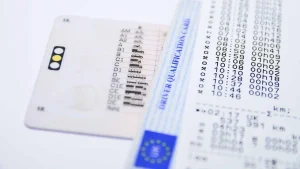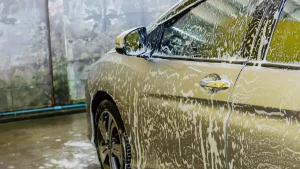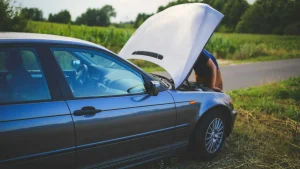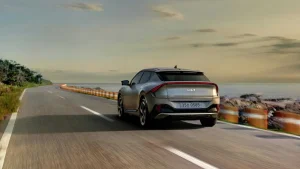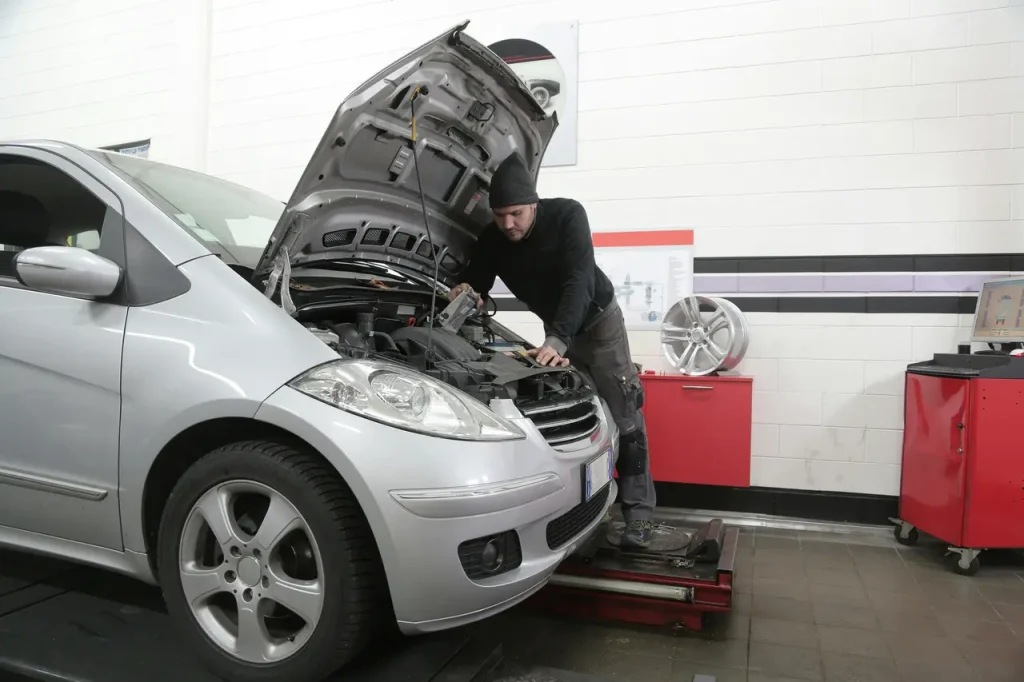
The Ultimate Used Car Buying Guide for Savvy Shoppers
Let’s be honest, the whole process can feel like a minefield. My first time, I was a nervous wreck. I bought a shiny blue hatchback that looked perfect but had the structural integrity of wet cardboard. It was a painful, expensive lesson. But it also turned me into the person who now helps all my friends navigate the shark-infested waters of the pre-owned market. And now, I’m creating this ultimate guide to help you. Forget the stress and the jargon. This is the real-deal, no-nonsense advice you actually need. We’re going to walk through this together, step by step, so you can drive away in something you love without getting ripped off. Trust me, it’s possible. You just need a plan.
Your Ultimate Guide to Buying a Used Car
Diving into the used car market can feel overwhelming, but it doesn’t have to be. With the right preparation and knowledge, you can uncover a fantastic deal on a reliable vehicle that serves you for years. This isn’t just about kicking the tires and haggling a bit; it’s a strategic process. From initial research to the final handshake, every step matters.
Think of this as your personal roadmap, a comprehensive plan designed to empower you. We will cover everything, because the details are what separate a smart purchase from a catastrophic one. This guide is built on experience—both good and bad—to give you a genuine advantage.
Why Choose a Pre-Owned Vehicle?
So, why not just buy new? The smell, the warranty, the pristine floor mats. It’s tempting, I get it. But the smart money is often on pre-owned, and for good reasons. The biggest one is depreciation. The moment a new car drives off the lot, its value plummets.
Like, thousands of pounds gone in an instant. It’s a brutal financial hit that the first owner absorbs, not you. When you buy used, you’re getting a car that has already taken that biggest depreciation hit, meaning your investment holds its value far better. Plus, your insurance and registration costs are typically lower. It’s just a financially savvier move all around.
Benefits of Buying Used
Value is the name of the game. For the same amount of money, you can often get a higher-spec used model than a base-level new one. Want leather seats, a sunroof, or a better sound system? Buying used makes those luxuries much more attainable. You also have a wider variety of models to choose from, including discontinued ones that might have a cult following. The data is also on your side; with thousands of owner reviews and reliability reports available online, you can learn about a model’s long-term performance, something impossible to know with a brand-new car. This is a key part of how to buy a reliable used car.
Common Misconceptions Debunked
Let’s clear the air. “Buying used is buying someone else’s problems.” That’s the old cliché, and while it can be true, it’s a massively outdated generalization. Modern cars are built to last. It’s not uncommon to see vehicles running perfectly well past 150,000 miles. Another myth is that you can’t get a good warranty. Wrong again. Many dealerships offer certified pre-owned (CPO) programs with extensive warranties, and third-party warranties are also widely available. The key isn’t avoiding used cars; it’s knowing how to inspect them properly.
The Pre-Purchase Research Phase
Fail to prepare, prepare to fail. This is the most critical phase, and rushing it is the biggest mistake you can make. Before you even look at a single car, you need to do your homework. This is where you set your budget, define your needs, and identify models that have a rock-solid reputation. This meticulous research is what transforms a hopeful gamble into a confident investment. Honestly, I spend more time in this phase than any other. It’s where you win or lose the game.
Setting a Realistic Budget for Your Used Car
Your budget is more than just the sticker price. You absolutely have to factor in the total cost of ownership. This means including insurance, tax, potential repairs, and fuel consumption. A cheap luxury German sedan might seem like a steal until you see the repair bills. A good rule of thumb is the 20/4/10 rule for financing: a 20% down payment, a loan term no longer than four years, and total car expenses (including insurance) under 10% of your gross income. Or better yet, figure out the cheapest way to buy a used car, which is usually paying cash. And don’t forget to set aside a contingency fund—at least £500-£1,000—for any immediate repairs or maintenance needed right after purchase. When considering financing options for pre-owned vehicles, it pays to shop around for the best rates before you even talk to a dealer.
Identifying Your Specific Needs and Wants
Be brutally honest with yourself. Do you really need a massive seven-seater SUV for your city commute? Or are you just trying to keep up with the neighbours? Think about your daily driving, your family size, cargo needs, and the types of roads you travel. Make a list of “must-haves” (like good fuel economy, certain safety features) and “nice-to-haves” (like a sunroof or a specific colour). This list will be your North Star, preventing you from getting distracted by a sporty convertible when you actually need a practical estate car. Sticking to your list is a core principle for a successful purchase.
Top Considerations for Reliable Used Car Models
Now the fun part begins: finding the right car. Dive into reliability ratings from sources like Consumer Reports, J.D. Power, and owner forums. Look for models known for their longevity and low cost of repairs. Japanese brands like Toyota and Honda often top these lists, but many other manufacturers have incredibly solid models. Identify two or three top contenders in your chosen category. This focused approach is so much better than just randomly browsing listings. Considering the long-term health of your vehicle from the outset is a smart move; our guide on car maintenance tips for longevity can provide further insight once you’ve made your purchase. Knowing what to look for when buying a used car starts with choosing a model that isn’t known for expensive problems.
Where to Begin Your Used Car Search
You have several options, each with pros and cons. Franchised dealerships often have CPO vehicles with warranties but at higher prices. Independent used car lots have variety but quality can be a mixed bag. Then there are private sellers, where you can find great deals but have the least protection. This is where tips for buying from a private seller become crucial. Online marketplaces like AutoTrader are fantastic for browsing everything at once. In my experience, the best websites for buying used cars are the ones that offer detailed listings and vehicle history reports. Don’t limit yourself to one source; explore them all to get a feel for the market and what constitutes a fair price.
Thoroughly Inspecting Your Potential Used Car
Okay, you’ve found a promising candidate. Now it’s time to play detective. Never, ever buy a car without inspecting it in person, in broad daylight. If you’re not mechanically inclined, bring a friend who is, or better yet, pay for a pre-purchase inspection from a trusted mechanic. This is non-negotiable and the best money you will ever spend. This is the heart of any guide for beginners. A thorough inspection can reveal hidden issues that could cost you thousands down the line.
What to Check on the Exterior
Walk around the car multiple times. Look for mismatched paint, which could indicate a past repair. Check for rust, especially under the wheel arches and sills. Look at the panel gaps; if they’re uneven, it could be a sign of a shoddy accident repair. Inspect the tyres. Are they from a reputable brand? Is the tread wear even? Uneven wear can point to alignment or suspension problems. We can’t overstate the importance of good tyres, especially as new advances in tyre and vehicle safety technology continue to make driving safer. Check all glass for chips or cracks. This part of the inspection is all about spotting red flags.
Evaluating the Interior Condition
The interior tells a story. Does the wear and tear match the mileage? A worn-out driver’s seat and shiny steering wheel on a low-mileage car is a huge red flag. Test every single button, switch, and knob. Air-con, radio, windows, seats, lights—everything. Check for any damp smells, which could signal a leak. Lift the carpets to check for dampness or rust underneath. This detailed checklist is a vital tool.
A Deep Dive Under the Hood
This can be intimidating, but there are simple things to check. The most important lesson on how to inspect a used car engine is to start with the basics. Check the oil dipstick. Is the oil black and gritty, or a clean honey colour? Look at the coolant. Is it a bright colour, or is it rusty and sludgy? Check all the fluid levels. Look for any visible leaks or cracked hoses. If you see anything that looks wrong, ask about it.
The Essential Test Drive Checklist
The importance of test driving a used car cannot be overstated. This is where you feel how the car truly performs. Plan a route that includes a mix of roads: city streets, a fast A-road, and maybe some hills. Turn the radio off and listen. Do you hear any strange noises from the engine or suspension? Does the car pull to one side? Test the brakes. Are they responsive or spongy? Does the steering feel tight and connected? Take at least 30 minutes. A short spin around the block tells you nothing. This practical test is a cornerstone of a smart purchase.
Uncovering the Vehicle’s History
A car’s past can predict its future. You need to know where it’s been and how it’s been treated. This means digging into its paperwork and running a full history check. Skipping this step is like buying a house without a survey—a massive, unnecessary risk.
Decoding the VIN and Its Importance
The Vehicle Identification Number (VIN) is the car’s unique fingerprint. You’ll find it on the dashboard (visible through the windscreen) and on a sticker inside the driver’s door jamb. Make sure the VIN on the car matches the VIN on the V5C logbook. Any discrepancy is a deal-breaker. End of story.
What Service Records Tell You
A thick folder of receipts and a stamped service book are beautiful things. They show that previous owners cared enough to maintain the vehicle properly. A full service history is a massive plus and adds value. No history? Be very cautious. It’s a key part of our best used car buying checklist.
Understanding Vehicle History Reports
A vehicle history report from a provider like HPI or Experian is an absolute must. It costs a few quid, but it’s invaluable. This report will tell you if the car has outstanding finance, if it’s been reported stolen, or if it’s been written off by an insurance company. A history report is your best defence against buying a lemon or a car with a dangerous past. This report is a non-negotiable part of the process.
Navigating the Negotiation and Purchase Process
You’ve done your research, completed your inspection, and checked the history. You love the car. Now comes the delicate dance of negotiation and the mountain of paperwork. Stay calm and be prepared.
Smart Strategies for Negotiating Price
Knowledge is power. Your research on similar cars for sale gives you a baseline. Start your offer below the asking price, but keep it reasonable. Never seem too eager. Point out any flaws you found during your inspection (worn tyres, scratches) as leverage for a lower price. Be polite, but firm. Knowing how to negotiate can save you hundreds, if not thousands. Be prepared to walk away. Sometimes the best move is no move at all.
Essential Paperwork for a Smooth Transaction
The key document is the V5C (the logbook). Ensure it’s the latest version and the seller’s details match their ID. You’ll also need the MOT certificate. The seller should provide the “new keeper” slip from the V5C. A written receipt is also a good idea, even for a private sale. Knowing what documents are needed makes the process much smoother.
Financing Your Used Car Purchase
If you’re using financing, get pre-approved from your bank or a credit union before you start shopping. This gives you a firm budget and prevents you from being pushed into a dealer’s potentially expensive financing package. Unfortunately, financial scams are a real threat, so it’s wise to understand how to recognize and avoid financial fraud during any large transaction. This is a crucial safety tip.
Post-Purchase: Getting Started with Your New Ride
Congratulations! The deal is done, and you have the keys. But your journey isn’t over yet. A few immediate steps will set you up for happy and safe motoring.
Immediate Steps After Buying Your Used Car
First thing’s first: tax and insure it before you drive it away. It’s a legal requirement. Then, get it home and give it a good clean. Your next step should be to book it in with your own trusted mechanic for a full fluid change and a once-over, even if it has a full service history. This establishes a new baseline for your own maintenance records. A solid maintenance schedule after purchase is vital.
Insurance, Registration, and Warranties
You’ve sorted the insurance. Now you need to handle the ownership transfer. The seller should notify the DVLA, but you should follow up to ensure the new V5C arrives in your name. If you bought a warranty, read the fine print carefully. Understand what is and isn’t covered. The risks of buying a used car without a warranty can be high, so if you don’t have one, that contingency fund we talked about is even more important.
Ensuring Long-Term Vehicle Safety
Your responsibility as the new owner is to keep the vehicle safe. This means regular checks of tyres, brakes, and lights. Don’t just rely on the annual MOT. This continuous vigilance ensures you catch small problems before they become big, expensive ones.
Final Tips for a Confident Used Car Purchase
And there you have it. Buying a used car is a marathon, not a sprint. Be patient, be thorough, and never, ever let your heart rule your head. If a deal feels too good to be true, it almost certainly is. Trust your gut. A good answer to ‘what questions should I ask the seller?’ is simply “everything.” This comprehensive guide is your shield. Use it to protect yourself and to find a vehicle that you’ll genuinely enjoy. Now go out there and find yourself a bargain. You’ve got this.


